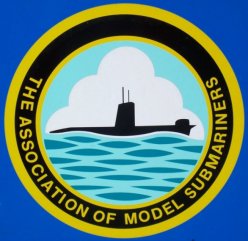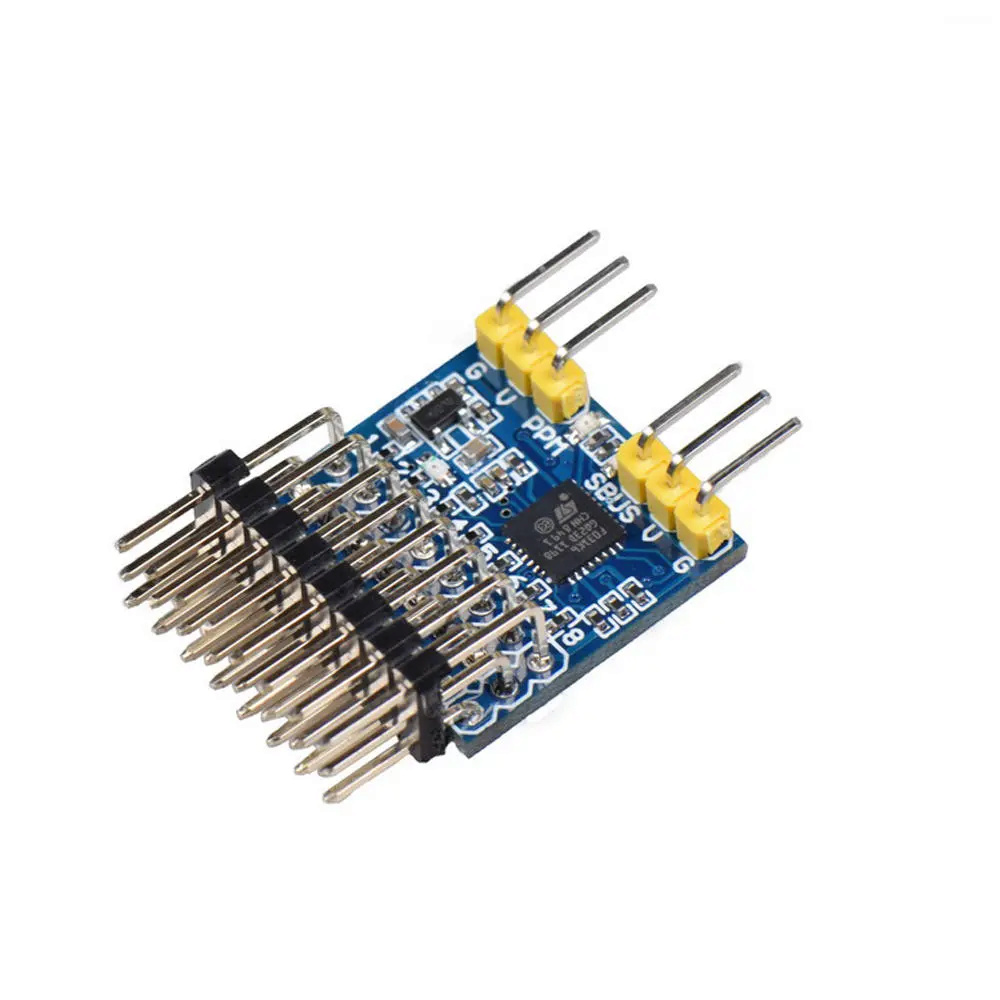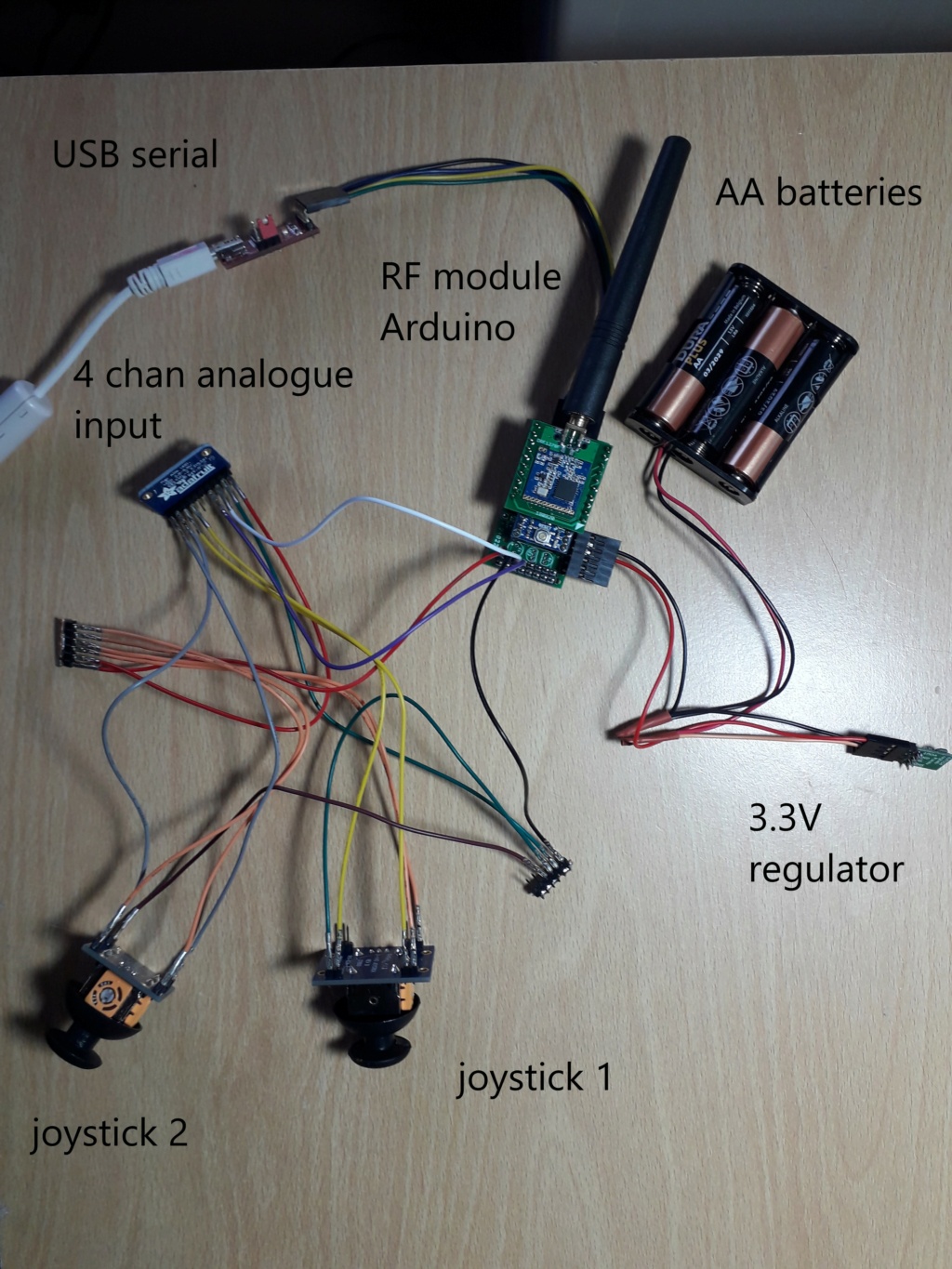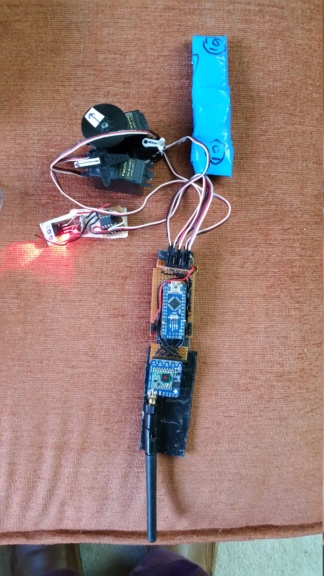Hi All,
As Tim says it's good to see new faces. He may have started something with 433Mhz for submarines!
I would also agree with Tim's advice for Simon. At the risk of sounding old fashioned - you need a transmitter box with some sticks on it! Because:
- Laptops, phones etc are difficult to see in sunlight if you are trying to control a sub from them.
- Nice second hand 35Mhz TXs are cheap on ebay. (£30 or so) and for that you get a nice box with battery, sticks and a trainer port which will give you a ppm signal output. (Cheapsub had a nice description of a "Frankentransmitter over on Subcommittee. Disable the rf side - crystal out and aerial removed as a minimum.)
A further update on the openLRS DIY TX and RX.
The RXs work nicely, and I would recommend anyone to have a go at building them and using them with a Hobbyking TX module. (still available for £4!)
The DIY TX is working consistently but at a maximum power setting of 4. I don't know why! (LATER EDIT: I wonder if this is the "Smart Reset" problem mentioned on https://forum.arduino.cc/index.php?topic=670182.0 All the more reason to move on from this rf module) I have tested this with 2 different rf modules and 2 aerials (including a dipole) and also tried a separate 3.3 volt supply in case they were getting a voltage drop. Range in air is about 2/3rd of the Hobbyking but it is still adequate for a model sub test (when the virus permits!)
Facebook posts:
Jonathan Askey
So 16 channels from handset transmitted @ UHF with ease
Converting 16 channels back to pwm at receiver not without it's challenges - latency is an issue at the moment to work through!....… See More
· Reply · Share · 3w
Adam Carlson
Jonathan, depends on how you do it. The first handful of channels you will likely want to be 8bit, say the first 4. The next channels likely do not need to be that large, especially if they are more generally for switching. With this, you can potent… See More
· Reply · Share · 3w
Adam Carlson
Now if you want to send telemetry back that is a different story, but if you are not staying narrow band, then it is not an issue.
· Reply · Share · 3w
Jonathan Askey
Hi Adam Carlson - thanks for info/comments
I have 2 way comms facilitating telemetry with no latency issue to talk about - indeed it's currently throttled back- been using a platform with this functionality for a few years.… See More
· Reply · Share · 3w
Jonathan Askey
Having scratched the surface with my problem it transpires that the resolution on the pwm on the Taranis radio (OpenTx) I am using is very "lumpy" - it jumps in steps of maybe 20-50us as you move a stick so no wonder my poor servo was stuttering
Cannot work out why the Taranis is so rough - no doubt a setting (mix) but I have given up with it for now and will use a trusted radio instead (Jeti) - one that I don't like connecting to electronics in case I releases it's blue smoke
Another case of looking in the code for the problem when it seems it was actually an external factor...
· Reply · Share · 3w · Edited
Jonathan Askey
16 channels transmitted and working smoothly - the loop code contains just one function that packs newly read ppm stream data into radio packet payload and sends it at a defined interval.
Latency is not noticable - no different to 2.4Ghz setup's
Now to add some of the whistle and bells and fire up the telemetry code.
This is such a simple solution!
· Reply · Share · 2w · Edited
David Forrest
badge icon
I received 2 x DRF1278DM LoRa modules from Tindie in China this morning. (I wanted to have a play with some LoRa stuff and they looked very easy to setup and use.)
I have just got them set up and they are sending serial telemetry (battery volts & amps) back from my sub on the bench. Very pleased!
They WERE easy to setup using the USB to TTL board (DAC02) They are on 458Mhz - I hope it is legal

and potentially could be used for LoRa range testing if my sub ever gets back underwater!
How are you getting on with transmission, Jonathan?
· Reply · Share · 5d · Edited
Jonathan Askey
Hi David Forrest - yes I am doing well - good progress - I am going back to basics, with fully documented code so progress is slow.
I may be missing something - LoRa IMHO cannot be legal - the transmission bandwidth is massive!!! LoRa can be up to 500KHz - the DRF1278DM spec recommends 125KHz - possible the default setting?
Do you have anyway of testing bandwidth?
· Reply · Share · 5d · Edited
David Forrest
badge icon
Thanks. Interpreting Ofcom regulations needs second opinions! The document I am using is IR2030 - Pages 87 & 88 cover Model Control:
https://www.ofcom.org.uk/.../pdf_file/0028/84970/ir-2030.pdf
The reason I am trying this is to see if LoRa gives increased range for underwater transmission. If it does, then there must be scope for telemetry at 433Mhz or ,even better, model control at 458MHz?
I am using the default setting for the DRF1278 of 125Khz. I only have the Spectrum Analyzer function in openLRS.
· Reply · Share · 5d
Jonathan Askey
David Forrest - To me it's 100% clear - maximum bandwidth is 25KHz
They are razor sharp in their very detailed specification
They state range 458.500-459.500MHz
There are 40 channels of 25KHz bandwidth
The transmission will spread 12.5KHz either side of the central channel (carrier) frequency (the bandwidth)
To ensure you do not go out of the allocated band they are very clear
Channel spacing 25 kHz.
Channel numbers 1 to 40 inclusive are available with channel centre frequency of 458.4875 MHz plus (Channel Spacing times channel number).
Channel 1 is 458.5125 (BW=25KHz 458.500 to 458.5250MHz)
1 458.5125
2 458.5375
3 458.5625
4 458.5875
5 458.6125
6 458.6375
7 458.6625
.....
35 459.3625
36 459.3875
37 459.4125
38 459.4375
39 459.4625
40 459.4875
So 125KHz Lora takes the bandwidth of 5 channels
Bandwidth is bandwidth and you are not allowed more than 25KHz!!
Sorry....
· Reply · Share · 4d · Edited
Jonathan Askey
David Forrest - if you want to mess with LoRa then I would make sure you go for mid band allocation 458.9875MHz
Loads of people think it's not important to play by the rules with radio - it won't matter, its not important
So much goes over the radio (e.g. remote monitoring ) that organizations pay good license fee money to use parts of the Spectrum - break these rules at your peril....
· Reply · Share · 4d · Edited
David Forrest - if you want to mess with LoRa then I would make sure you go for mid band allocation 458.9875MHz
Loads of people think it's not important to play by the rules with radio - it won't matter, its not important
So much goes over the radio (e.g. remote monitoring ) that organizations pay good license fee money to use parts of the Spectrum - break these rules at your peril....
· Reply · Share · 4d · Edited
David Forrest
badge icon
Steady on, Jonathan! I respect all the regulations and I would hardly be discussing anything that infringed regulations in such a public space, in any case.
An experiment with LoRa this afternoon (a range check using the published telemetry frequency … See More
· Reply · Share · 4d · Edited
Jonathan Askey
David Forrest- apologies - I meant no offence. I have seen on many forums (and another sub one) where people dismiss the regulations as "not a problem", I am not saying that is what you have done or you are willfully breaking the law..
Having used radio as a hobby for 45 years legally it does annoy me when people turn a blind eye - rant over!
Was your LoRa setup @ 25KHz bandwidth?
I am not sure you are comparing apples with apples.
IMHO - the RF22 unit is outdated and ineffcient.
It would be interesting to put an RFM69 up against your project and see how they compare...
I easily get 500-1000m direct line of site without trying
· Reply · Share · 4d · Edited
David Forrest
badge icon
I bought the DRF1278DM modules because they seemed to be an easy route into some experiments with LoRa. They do serial communication "straight out of the box" so I could use them with my existing telemetry setup. (I had them up and working within t… See More
· Reply · Share · 3d · Edited
Jonathan Askey
David Forrest Would an outbound transmission from the model on 433MHz (telemetry) if used alongside openLRS on 459Mhz to control the model cause interference issues?
My experience would be that the close proximity of the 2 frequencies and more specifi… See More
· Reply · Share · 3d
Jonathan Askey
This is a very short video that helps explain LoRa bandwidth
https://youtu.be/dxYY097QNs0
LoRa CHIRP
YOUTUBE.COM
LoRa CHIRP
LoRa CHIRP
· Reply · Share · 4d · Edited
Jonathan Askey
David Forrest - I was interested in your post re telemetry. When you break away from openLRS and are in control of your own architecture things can get interesting.
I have a few projects that use multiple transceivers and processing shared across mulitple Arduinos.
At the moment my shore based transceiver requests an ACK from the model based transceiver every 5 packets.
The ACK model response itself is a packet that can be packed with 60 odd bytes of telemetry data - so is sort of a "free" way to get telemetry back to shore.
I appreciate space is limited in many subs - I am playing with mutliple model based transceivers to see if any merit of a "combined" packet reception - transceivers would be mounted in different parts of the model with antennas in different aspects.
I am also for now testing the merit of an additional shore based transceiver that is working in reception mode only and sniffing the live comms between RC tranny and model
This would be used to show the status/health of comms and also telemetry - it's possible if processing power available to move this back to the main Arduino interfaced to the ppm stream from the RC handset
I have used this concept a few times - when I fire a gun on a warship I have a shore based sound system plugged into a somewhat large PA speaker. The remote sound system has it's own transceiver and sniffs the packets and can trigger sounds accordingly.
· Reply · Share · 4d · Edited
Jonathan Askey
I forgot to mention - I have also included a fail safe interrupt pin tied to an interrupt function on the receiver end.
This would allow you to trigger the fail safe sequence from an external system easily - this could be a sensor of some sort (pressure,moisture,voltage,light), a micro switch etc etc
· Reply · Share · 4d · Edited
David Forrest
badge icon
That's a very useful, clear explanation. (I particularly like the waterfall display to show the "chirp".)
35 & 40 Mhz are much easier to understand - 30 channels or so all spaced 10KHz apart. One person, one channel! (Crystals anyone?)
So on 458Mhz - 40 channels spaced 25kHz apart. Then along comes LoRa spanning 5 channels (Using 125KHz bandwidth). One person 5 channels! Only 8 simultaneous users would use up the entire allocated space? A problem? Not allowed?
I take it that LoRa doesn't use frequency hopping which openLRS does? I have the feeling that frequency hopping is one reason why openLRS works well for models submerged in water. It is really against the laws of physics, (Jim)!
· Reply · Share · 4d · Edited
Jonathan Askey
Quick video of 16ch on UHF to show latency - this is with telemetry streaming back from model (yet to fix the display)
Spent hours working on removing the servo jitter but it's now history!
Sorry about the orientation...(now fixed)
· Reply · Sha









» RC Drift Gyro for pitch control
» WW2 mini sub build
» sonar data link
» Robbe Seawolf V2
» ExpressLRS - 868/915 Mhz equipment
» Flight controllers as sub levelers
» 868/915 Mhz as a viable frequency for submarines.
» Microgyro pitch controller corrosion